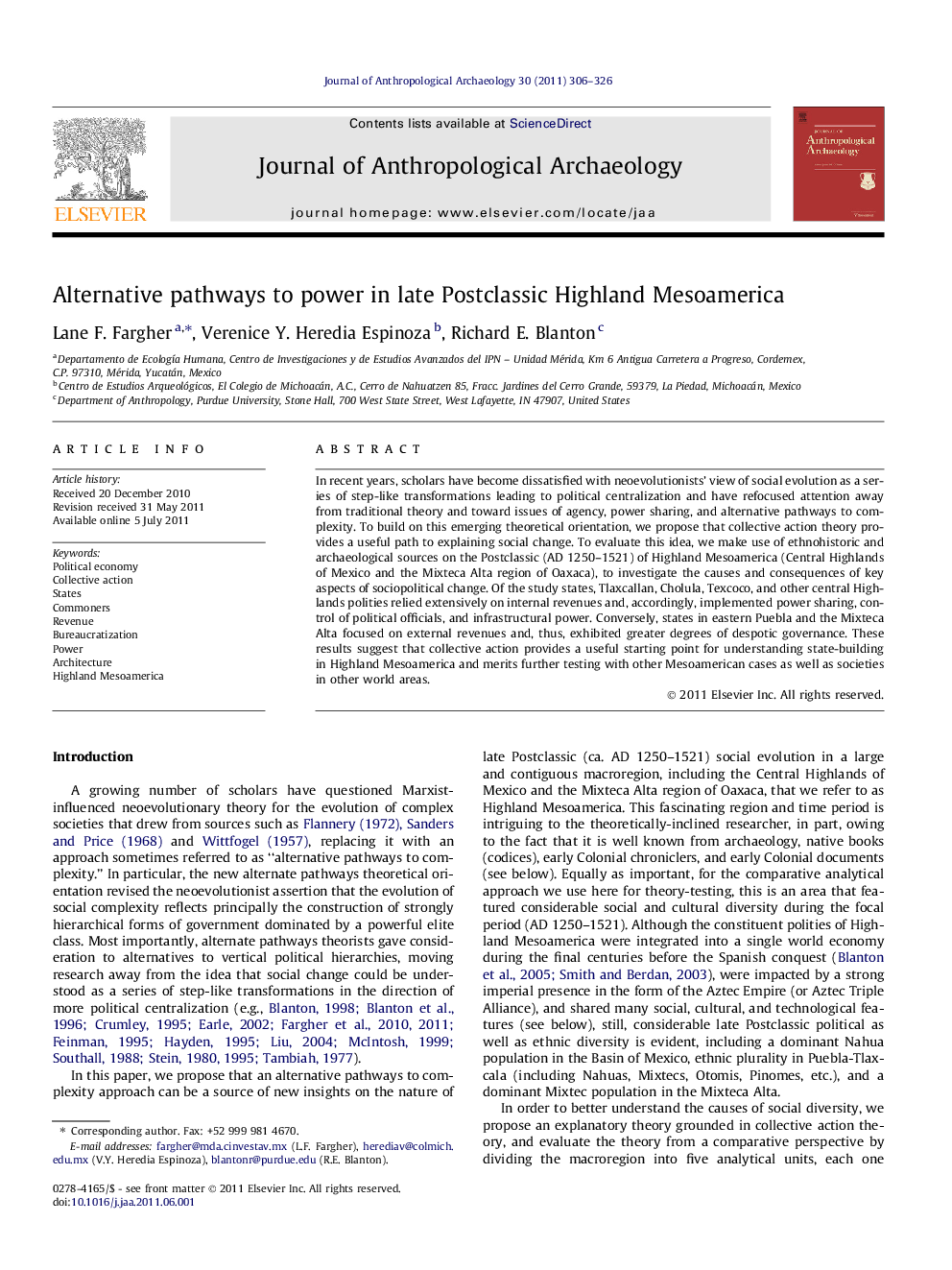| Article ID | Journal | Published Year | Pages | File Type |
|---|---|---|---|---|
| 1035042 | Journal of Anthropological Archaeology | 2011 | 21 Pages |
In recent years, scholars have become dissatisfied with neoevolutionists’ view of social evolution as a series of step-like transformations leading to political centralization and have refocused attention away from traditional theory and toward issues of agency, power sharing, and alternative pathways to complexity. To build on this emerging theoretical orientation, we propose that collective action theory provides a useful path to explaining social change. To evaluate this idea, we make use of ethnohistoric and archaeological sources on the Postclassic (AD 1250–1521) of Highland Mesoamerica (Central Highlands of Mexico and the Mixteca Alta region of Oaxaca), to investigate the causes and consequences of key aspects of sociopolitical change. Of the study states, Tlaxcallan, Cholula, Texcoco, and other central Highlands polities relied extensively on internal revenues and, accordingly, implemented power sharing, control of political officials, and infrastructural power. Conversely, states in eastern Puebla and the Mixteca Alta focused on external revenues and, thus, exhibited greater degrees of despotic governance. These results suggest that collective action provides a useful starting point for understanding state-building in Highland Mesoamerica and merits further testing with other Mesoamerican cases as well as societies in other world areas.
► Aspects of structure, agency, power sharing, and decentralization are considered. ► Collective action was key to state building in Postclassic Highland Mexico. ► Collective action theory links revenues, bureaucracy/power sharing and public goods. ► States based on internal revenues divided power and provided public goods. ► States based on external revenues exhibited despotism and did not provide for voice.
